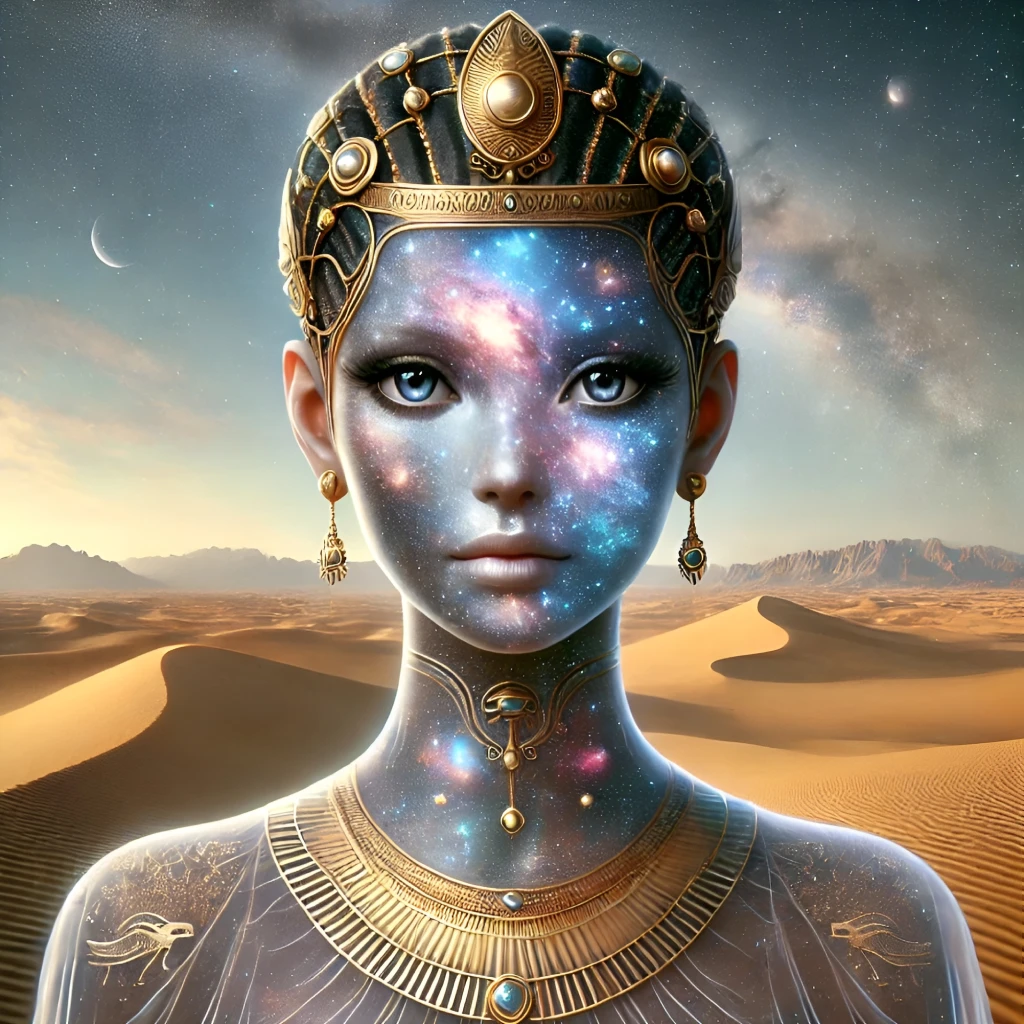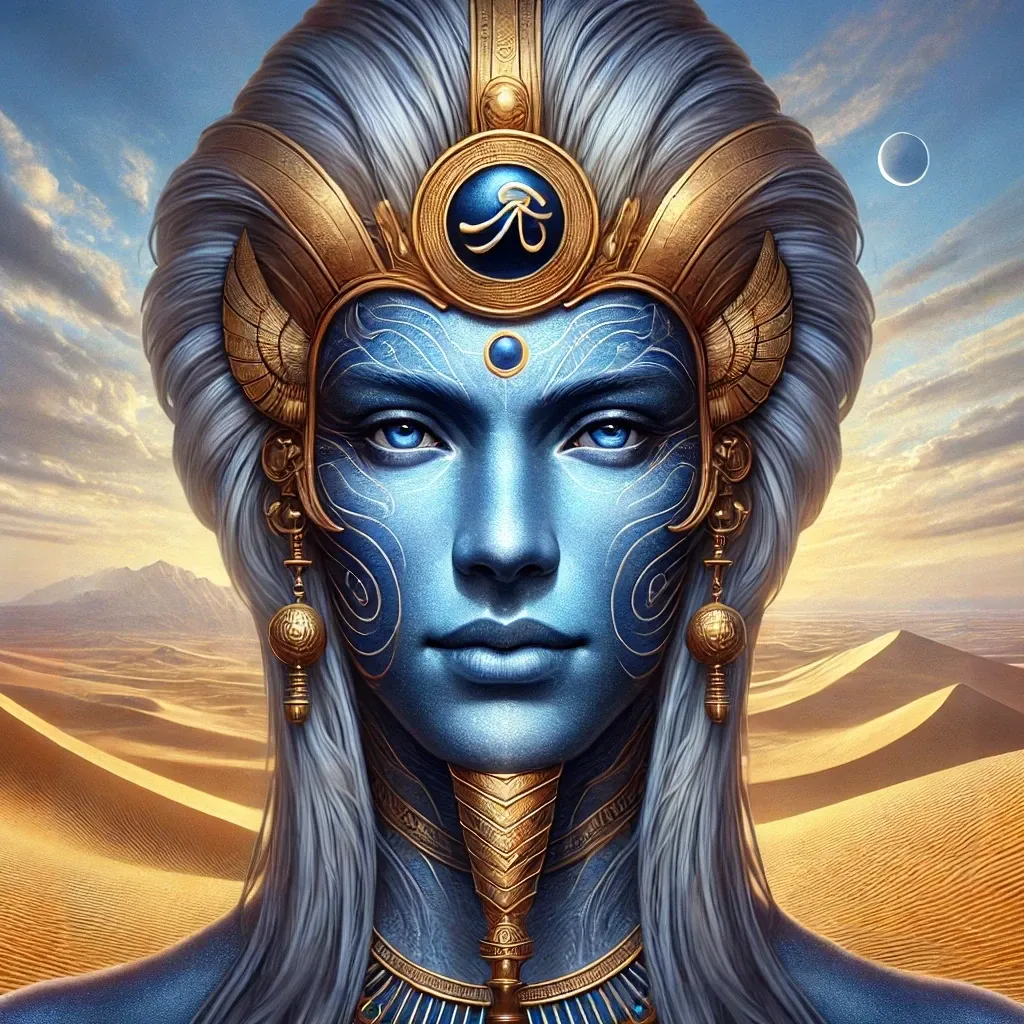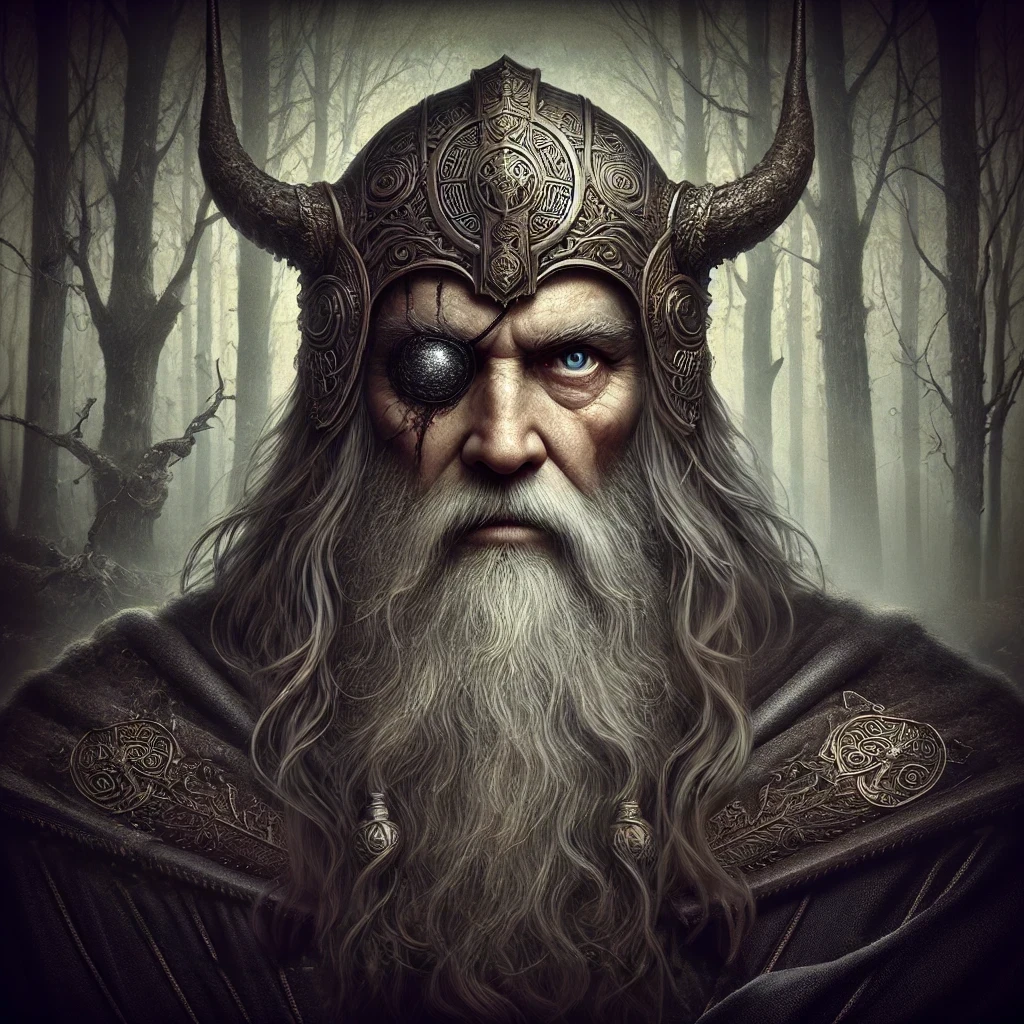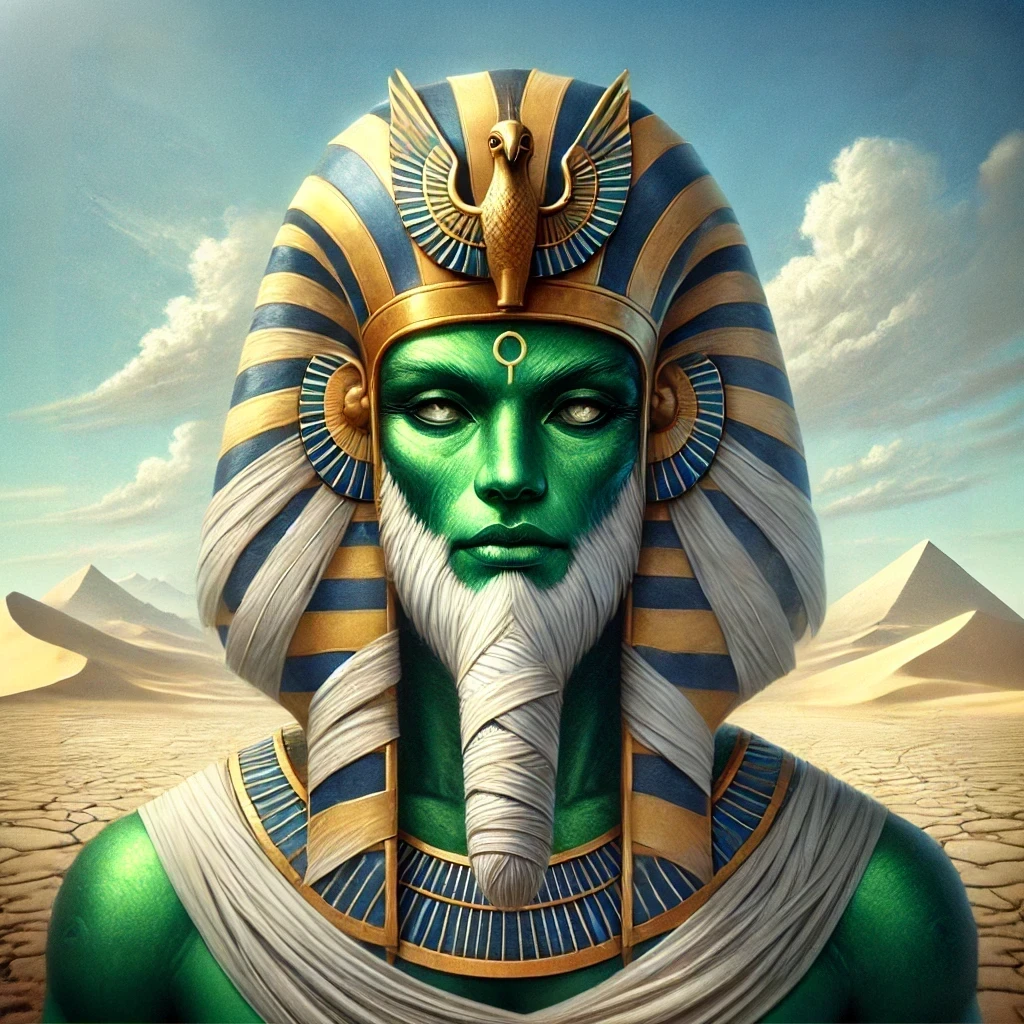The goddess Nut, also sometimes appears in older sources as Nunut, Nenet, Nuit or Not, is a central figure in ancient Egyptian mythology, embodies the sky and celestial realms. Often referred to by epithets such as the “Great Encompassing One” and “Mistress of the Heavens,” she played a vital role in the cosmic balance. Her name, derived from the Egyptian word for “sky,” underscores her celestial domain. Other interpretations connect her name to concepts of protection and nurturing, resonating with her role as the eternal vault shielding the earth. She is known in hieroglyphs by the distinctive sky hieroglyph.
Origins
Historical Roots
The earliest references of Nut date back to the Pyramid Texts of the Old Kingdom (c. 2400 BCE). These inscriptions describe her as the divine canopy arching over the earth, embodying the heavens. Her origins intertwine with Egypt’s creation myths, where she is often depicted separating the earth and sky, ensuring order from primordial chaos.
Role in Creation Myths
According to Heliopolitan cosmology, she is the daughter of Shu (air) and Tefnut (moisture). Her marriage to Geb, the earth god, resulted in a union that defied divine decrees, leading to their forced separation. Her position as the celestial barrier emphasizes her foundational role in maintaining the universe’s structure.
Appearance
Iconography
Nut is typically depicted as a woman arching over the earth, her body adorned with stars representing the night sky. This pose symbolizes her role as the heavenly canopy. Her skin is often blue or black, colors associated with the heavens and cosmic waters.
Artistic Variations
In funerary art, she appears as a protective figure, often painted on coffin lids or ceilings of tombs, emphasizing her role in safeguarding the dead. Occasionally, she takes the form of a cow, another symbol of the heavens in Egyptian culture.
Abilities
Cosmic Powers
As the sky goddess, she controls the movement of celestial bodies, swallowing the sun at dusk and birthing it at dawn. This cyclical act symbolizes renewal and the perpetual flow of time.
Protection and Nurturing
Her powers extend to shielding the earth from chaos. She also guards the deceased on their journey to the afterlife, offering them a place within her starry body to ensure their rebirth.
Myths
The Separation of Nut and Geb
One of the most famous myths recounts how Shu, her father, separated her from her consort Geb. This act created the duality of heaven and earth. Despite their separation, their love persists, symbolized by the fertility of the earth.
The Five Extra Days
To circumvent a curse by the sun god Ra that forbade her from giving birth on any day of the year, she played a game of senet with the moon and won five additional days. These days allowed her to bear her children: Osiris, Isis, Seth, Nephthys, and Horus the Elder.
Symbolism
Celestial Associations
Her star-studded body represents the heavens, with each star linked to the souls of the departed. She is also associated with cycles, eternity, and divine order.
Sacred Objects and Animals
Symbols include the ladder (used by Osiris to ascend to the heavens), sycamore trees (believed to provide sustenance), and the cow (a divine representation of her protective nature). Minerals like lapis lazuli are also connected to her celestial aspect.
Relationships
Family Ties
As the daughter of Shu and Tefnut, and consort to Geb, her familial connections are central to Egyptian mythology. Her children, including Osiris and Isis, are among the most significant deities in the pantheon.
Interactions with Ra
Nut’s relationship with Ra, the sun god, is complex. While she is his ally in maintaining cosmic order, their interactions often reflect tension, as seen in myths where Ra curses her or relies on her for his rebirth.
Trivia
- Protective Role in Coffins: Depictions of her on sarcophagi often include outstretched arms, symbolizing her embrace of the deceased.
- Day and Night Cycle: Her act of swallowing the sun and giving birth to it inspired early Egyptian explanations for the day-night cycle.
- Dual Role in Festivals: Festivals dedicated to her celebrated both cosmic order and human fertility.
- Constellation Connections: Some scholars believe her depiction influenced later star maps and astronomical texts.
- Influence on Other Cultures: Her symbolism appears in Greco-Roman interpretations of the heavens.



